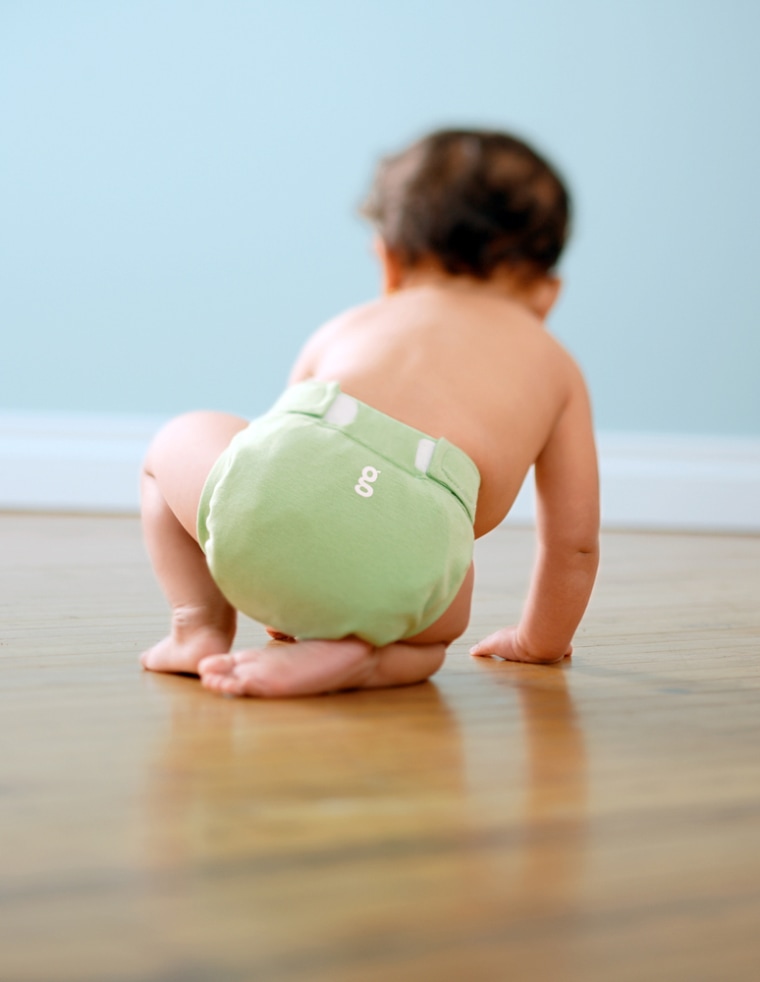Imagine consumer products made from healthy and safe materials that, at the end of their life, are taken apart and either turned into raw materials for new products or returned to the earth as compost. These products are manufactured using renewable energy and marketed with socially responsible strategies.
In this world, you can flush the dirty diapers down the toilet, spray household cleaners without fear of poisoning your houseplants (or family) and wax your surfboard without feeling guilty about the fish.
In essence: Shopping can be good again.
“Ideally, cradle to cradle will become the mantra for product design. No company will enter a product development process without using these criteria,” said William McDonough, eco-evangelist, designer and co-author of the manifesto “Cradle To Cradle.”
The secret is products designed with the cradle-to-cradle mantra in mind. And these hyper-green products are coming to a shopping mall near you.
Even boosters admit the first wave is a small, mismatched group of certified products: All-purpose cleaner, baby diapers, office chairs, workstations, surfboard wax and whiteboards that have slowly entered the market as just a small blip on the radar screen of eco-savvy consumers.
But some trend watchers predict these hyper-green products will multiply and move mainstream as more people become environmentally aware.
What makes cradle-to-cradle products different from other green products is independent third-party certification. Consumers can now look for the C2C-certified logo, which began appearing on products about six months ago.
McDonough Braungart Design Chemistry, founded in 1995 by McDonough and Michael Braungart, has certified about 60 cradle-to-cradle products over the past two years and about 30 applications are pending, said Steve Bolton, manager of business development at the firm. A Web site featuring new product announcements, forums and a blog is set to launch by December.
The trend has gained traction over the past six months, especially since the cradle-to-crade idea received receiving recognition from the U.S. Green Building Council. An international meeting set for next year will raise the movement's profile. A new international partnership has been formed with McDonough Braungart Design Chemistry; Material Connexion, a network of material specialists; and EPEA, an independent scientific research institute.
“I can see it coming,” said Lloyd Alter, developer, architect and writer for Treehugger, a Web site dedicated to all things green. “There is no standard for what green is. All of these (other) products are being called green. What is critical about cradle to cradle is that it is a demonstrative standard. It is rigorous but achievable.”
The beauty is that anything can be certified — cars, chairs, clothes, office supplies and, yes, diapers. An Australian couple, Jason and Kim Graham-Nye, earned cradle-to-cradle certification for their product, gDiapers, to gain “legitimacy and credibility with our customers,” said spokeswoman Kate French. Their diapers consist of a washable cotton outer pant and plastic-free flushable refill.
“It’s imperative that we back up our claims with an independent, third-party evaluation," French said.
"Consumers need to be able to distinguish legitimate environmental claims vs marketing slogans. It's our desire to be a leader on that front," French said. "We see C2C as the 'USDA certified organic' equivalent stamp for consumer packaged goods."
The first C2C certified consumer product — a U.S. Postal Service box — demonstrates how complicated redesign can be, Bolton said. Sixty packing items — including boxes, decals and labels — yielded 1,400 ingredients that had to be accounted for and certified. But there are benefits, such as reducing the cost of waste and hazardous material disposal. Now, you can recycle that Postal Service box when you are done with it.
“The idea is innovation,” said Bolton. “It is creating something new and exciting for you, your customers and your stakeholders. The opportunity for redesign is an opportunity for creativity.”
The new international partnership, formed just last month, will spread practical knowledge and build relationships among designers, producers and certifiers. The association has already began offering cradle-to-cradle workshops, certification and product development to interested companies.
The first cradle-to cradle convention — called NuTec and scheduled for Germany in November 2008 — will be a turning point because the partnership is pushing to certify as many products as possible by then, said Andrew Dent, Material Connexion’s vice president.
“Once you can get the materials manufacturers on board, then it will give the complex manufacturers a palette of materials to choose from,” said Dent. “Then it makes the whole process a lot simpler and a lot easier.”
Sales of cradle-to-cradle building products — such as building exteriors, carpet fibers and floor coverings — will probably increase after the U.S. Green Building Council incorporated these products into its Leadership in Energy and Environmental Design rating system this year, known as LEED.
“My prediction is we’re just seeing an awakening in the market that there is a better way to be doing what we are doing,” said Scot Horst, chairman of the LEED steering committee. “As I travel around, you can see the giant machine of our economy twist around.”
True believers see an even brighter future when entire industries adopt cradle to cradle as a standard design protocol.
“We had the Industrial Revolution, where we don't care how it is made as long as it is cheap, fast and we make a lot of it,” said Dent. “This is a revolution where it is a total beauty product. … These are products you can be proud of.”
